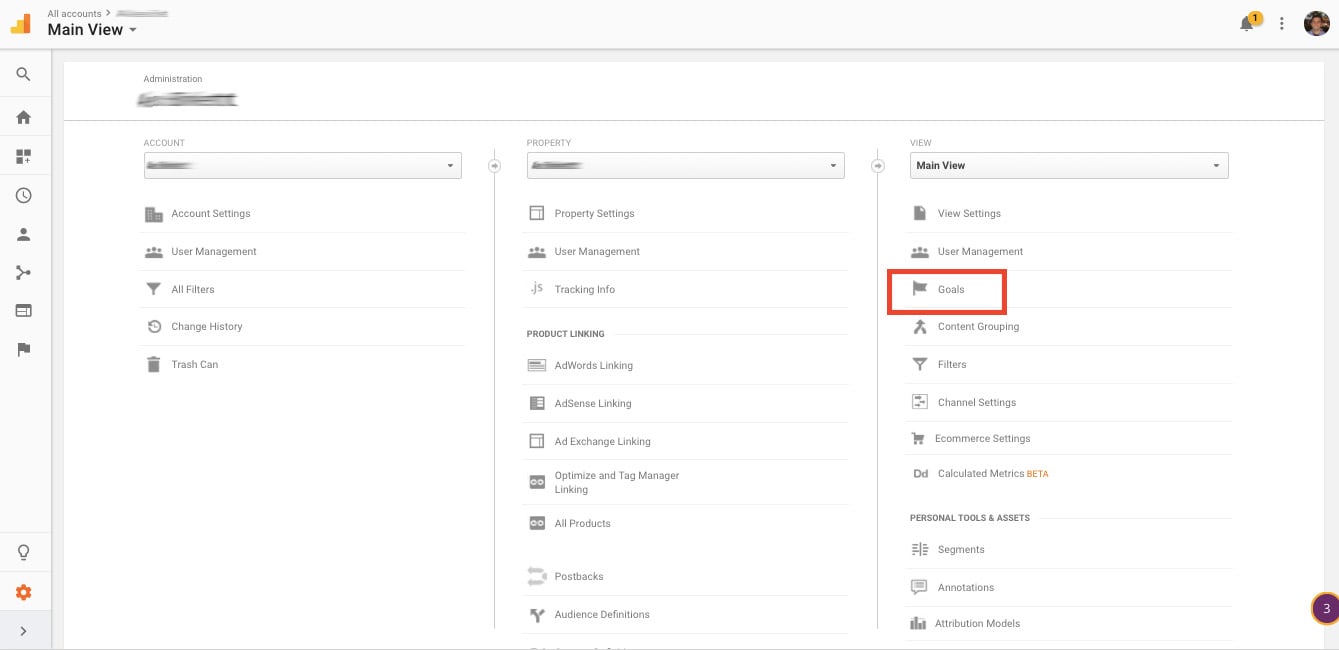Discover What Data Is Google Analytics Goals Unable to Track
Discover What Data Is Google Analytics Goals Unable to Track
Blog Article
Discover the Limitations of Google Analytics Goals: Revealing the Data Types That Remain Untrackable
As organizations increasingly depend on data-driven decision-making, recognizing the restrictions of devices like Google Analytics ends up being paramount. While Google Analytics Goals deal useful insights into individual interactions, there exist data kinds that avoid monitoring, presenting difficulties to a comprehensive understanding of user actions.
Insufficient Customer Journey Tracking
Insufficient customer trip monitoring within Google Analytics can hinder the capability to properly evaluate customer actions. When the individual trip is not completely tracked, there are gaps in the information that avoid a thorough understanding of how users interact with a site. This lack of understanding can cause missed out on opportunities for optimization and renovations to the user experience.
One common issue with incomplete user journey monitoring is the inability to see the full path that customers take in the past completing a goal or leaving the site. Without this details, it is challenging to identify where customers might be encountering challenges or rubbing points that prevent them from transforming. In addition, insufficient tracking can cover the influence of specific advertising efforts or web site adjustments on customer behavior.
To address this restriction, it is critical to establish up correct monitoring devices within Google Analytics to record the entire customer trip. This might involve establishing up occasion monitoring, goal funnels, or utilizing devices like Google Tag Supervisor to make sure that no crucial interactions go unrecorded. By gaining an extensive sight of the user journey, internet site owners can make even more informed choices to enhance customer engagement and drive conversions.
Acknowledgment Difficulties
Navigating with acknowledgment obstacles in Google Analytics requires a complete understanding of just how different touchpoints contribute to the overall conversion process. Attribution challenges occur from the intricacy of modern-day consumer journeys, where customers interact with multiple networks prior to transforming.
One usual acknowledgment challenge is the trouble in associating conversions to the correct resource, especially in instances where users connect with multiple networks before transforming. Additionally, cross-device monitoring positions an additional attribution obstacle, as users often change between gadgets throughout their journey, making it testing to track their interactions flawlessly.
Offline Conversions
Provided the obstacles related to attributing conversions properly in online networks, the measurement of offline conversions presents a substantial possibility for marketing professionals looking for a more detailed understanding of their customers' trip. Offline conversions refer to activities that clients take in the physical world, such as making acquisitions in brick-and-mortar shops or over the phone, participating in events, or involving with published products - what data is google analytics goals unable to track. These conversions are crucial for services that operate both online and offline, as they provide useful understandings into the efficiency of advertising and marketing campaigns across different touchpoints
Tracking offline conversions commonly positioned a significant difficulty for marketers, as it was challenging to link these actions back to specific online communications accurately. With innovations in modern technology, such as the assimilation of CRM systems, unique identifiers, and discount coupon codes, companies can now bridge the space in between online and offline information to acquire an extra all natural view of consumer actions. By effectively measuring offline conversions, online marketers can enhance their techniques, assign resources more successfully, and inevitably improve the general consumer experience.
Cross-Device Tracking
Cross-device monitoring plays a vital role in recognizing the interconnected nature of consumers' find this electronic interactions throughout read the article multiple tools. In today's omnichannel world, where customers effortlessly switch in between desktops, tablet computers, and mobile phones, tracking their behavior throughout these tools is important for marketing professionals to get a thorough sight of their client trip.

Additionally, privacy worries and laws such as GDPR and CCPA have further challenging cross-device monitoring. With customers requiring even more control over their information and increased restrictions on tracking technologies, marketing experts should discover privacy-compliant and cutting-edge ways to connect user interactions throughout tools.
Dynamic Web Content Engagement
Understanding user engagement with dynamic content is critical in optimizing digital advertising and marketing strategies for enhanced audience communication. Dynamic web content refers to web site aspects that alter based upon customer behavior, preferences, or other elements, offering a customized experience. Tracking user communications with vibrant material positions challenges for typical analytics devices like Google Analytics.
While Google Analytics can track basic interactions like clicks and web page views, it might battle to record more nuanced involvements within dynamic content. what data is google analytics goals unable to track. Metrics such as time invested on particular dynamic components, hover activities, or interactions within pop-ups are typically not easily quantifiable using typical monitoring methods. This constraint hinders online marketers' capacity to completely grasp read here exactly how users are involving with dynamic content and customize their approaches appropriately

Final Thought
To conclude, Google Analytics goals have limitations in tracking incomplete individual trips, associating conversions properly, recording offline conversions, tracking cross-device communications, and measuring dynamic material interaction. These restraints highlight the relevance of discovering added tracking methods and devices to gain a more extensive understanding of individual habits and conversions past what Google Analytics can supply.
While Google Analytics Goals deal beneficial understandings right into user interactions, there exist data types that avoid monitoring, posturing challenges to a detailed understanding of customer actions.Insufficient user trip tracking within Google Analytics can hinder the capability to properly evaluate individual behavior. When the user trip is not completely tracked, there are spaces in the data that protect against a comprehensive understanding of just how customers engage with an internet site.One typical problem with incomplete customer journey tracking is the lack of ability to see the complete path that customers take previously completing an objective or leaving the site. By acquiring a comprehensive view of the customer trip, website proprietors can make more enlightened choices to enhance individual engagement and drive conversions.
Report this page